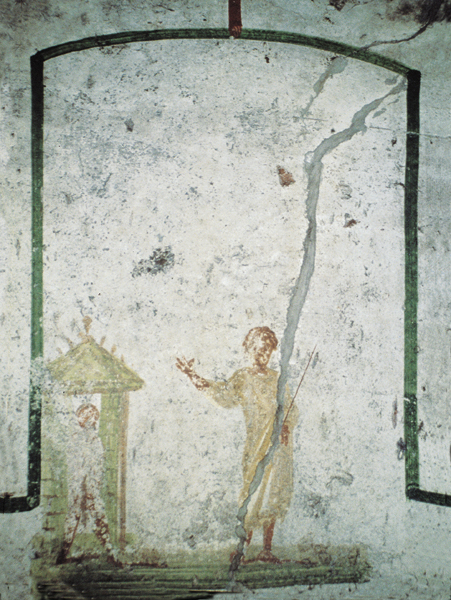Image Details

Archivio Pontifica Commissione Per L’Archeologia Sacra
The oldest known Lazarus image, dating to the mid 200s, decorates the walls of the Catacomb of Callixtus, in Rome. Although later illustrations often added Lazarus’s sisters Mary and Martha, awestruck witnesses and a more elaborate tomb, this painting effectively uses only two figures and a simple, two-dimensional tomb to convey the drama of the second longest continuous narrative in the Gospel of John.
In John’s Gospel, the stories of Jesus’ public ministry culminate in Lazarus’s resurrection; immediately after, some of the witnesses provoke the Pharisees to set in motion the plot to execute Jesus, and the narrative shifts to the Passion. More than 100 images of this pivotal scene of Lazarus’s return to life adorn Roman catacomb walls and sarcophagi. Author Robin Jensen suggests that the Lazarus images reflect an early Christian understanding of this story as a precursor of Jesus’ own resurrection, and as a promise of eternal life for all who have died.
